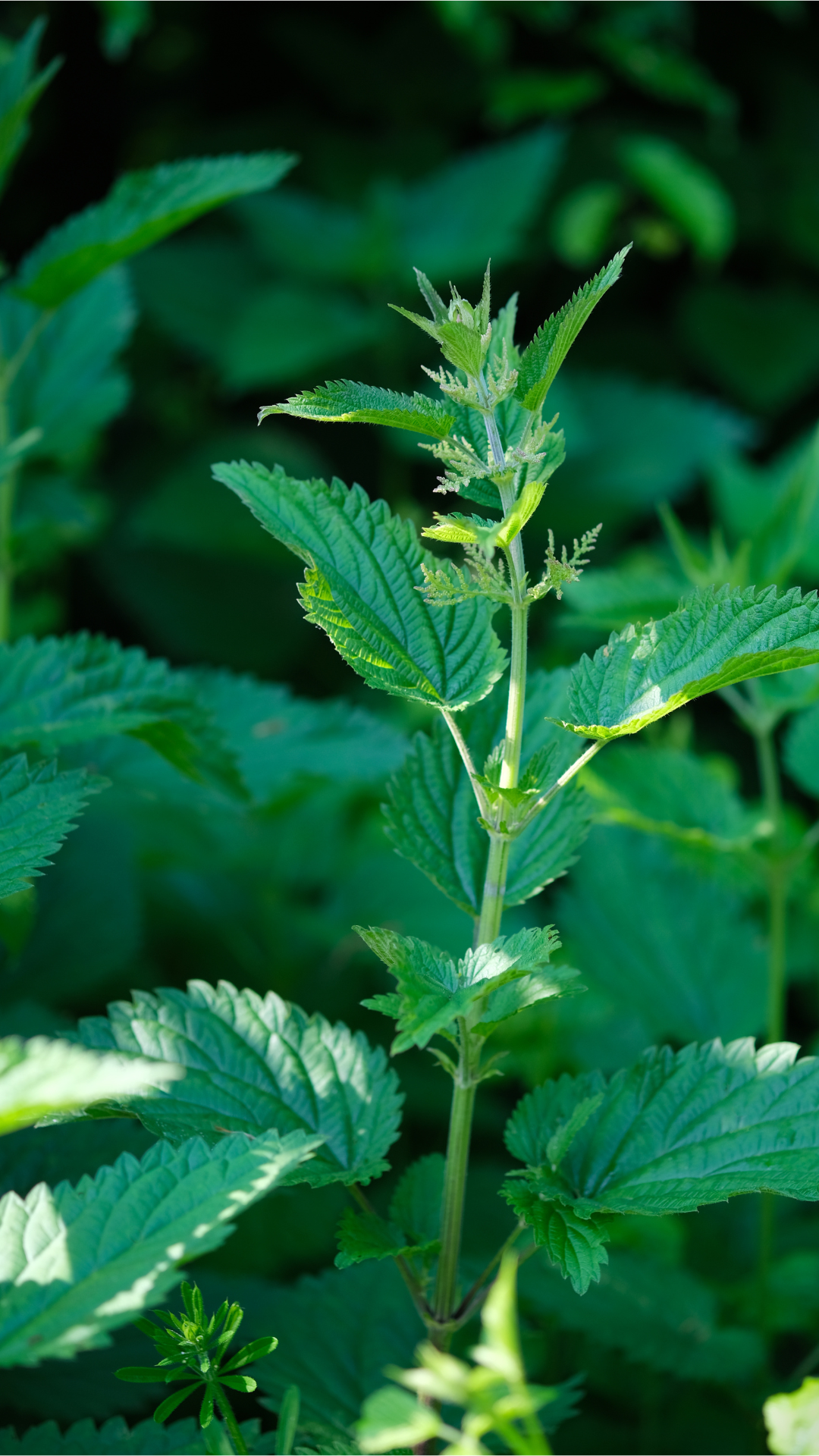Nettle
In modern agriculture, this wonder herb is considered an invasive weed, with many desperately trying to evict it from their gardens. I hope that by reading this mini monograph, people will start to see the beauty in what this botanical offers us, rather than diminishing it to a nuisance plant that stings you as you walk by.
Nettle grows throughout temperate Europe, Asia and some parts of Africa and America. It particularly loves nitrate-rich soil and can often be found in waste places in abundance. The whole plant is covered in hairs which are actually like teeny-weeny needles. On contact with your skin, these inject chemicals like formic acid and histamine into you, which is what causes you to feel a sting! The sting doesn’t last too long but can be quite irritating, especially when you get lots of them.
It’s traditionally been used as a spring tonic and is often utilised for its detoxifying properties. In older times, the plant itself would be used to sting the skin around the joints of those who suffered from rheumatic conditions like arthritis. The irritation of the sting would stimulate circulation and help to ease the pain and swelling in joint – ouch!
It was also used as a source of food and a remedy for scurvy. It’s often used as a commercial source of the green plant pigment chlorophyll.
Common Names: Stinging Nettle, Common Nettle
Botanical Name: Urtica dioica
Family: Urticaceae
Parts used: Leaf, Root, Seed
Description
The leaves of nettle are very nutritious. They’re an abundant source of many vitamins and minerals and can be thought of as natures free multivitamin supplement. The leaves are commonly sought for their anti-allergic properties, making nettle useful for conditions like hay fever and other allergies.
Nettle has diuretic properties which help to remove metabolic waste from the body. It is thus used by many to aid in the cleansing of the system and is commonly used for gout, where there is a build-up of uric acid in the joints.
The plant is also used for chronic skin conditions such as acne, eczema and psoriasis. It is usually combined with other depurative herbs such as sarsaparilla, Oregon grape and red clover.
Due to its astringent properties, nettle is sometimes used in herbal mixes prepared for women with heavy uterine bleeding.
Though beating your joints with a bunch of fresh nettle leaves (to relieve joint pain) may seem a little bit extreme now, nettle can still be taken internally for aiding the symptoms of arthritis.
The root of nettle has a very specific indication – benign prostatic hypertrophy (enlargement of the prostate). Studies have shown that it is able to improve the flow of urine, reduce urinary frequency (especially at night time) and help to reduce the volume of residual urine in the bladder.
I love to make use of the nutritious nature of nettle and drink it in times where I feel I need boosted nutrition or in need of extra nourishment – for example during menstruation. For my iron-deficient patients, I often advise that they make a strong infusion of nettle (the best when infused overnight) and add to it a spoonful of blackstrap molasses. Within a week or two of consistent use, most people report feeling much more energetic.
Main constituents
Flavonol glycosides, sterols, chlorophyll, carotenoids, vitamins (including Vitamin C, K and B vitamins), minerals, phenolic acids, rutin, quercetin. The hairs that sting you contain histamine, acetylcholine, formic acid and serotonin.
Actions
Leaf – antiallergic, antirheumatic, diuretic, astringent, depurative, styptic (haemostatic), nutritive (nutritious or providing nourishment)
Root – anti-prostatic
Indications
*Indications simply mean what conditions this herb is typically used for
Leaf – allergic rhinitis (hay fever), osteoarthritis, fluid retention, cystitis, urethritis, eczema and other skin conditions
Root – benign prostatic hyperplasia
How to use it
Infusion: Make an infusion from dried or fresh nettle leaves and drink 3 cups a day.
Tincture: Take 20-40 drops of tincture of the leaf or root three times a day for suitable conditions.
Culinary: Pick fresh nettle leaves and use to make soup or pesto!
Dosage
20-40mls per/week (tincture)
Safety considerations
Rare cases of contact allergy. Wear gloves when foraging for nettle.
Reading Material
Principles and Practice of Phytotherapy by Mills and Bone
Medical Herbalism by David Hoffman
The Complete Herbal Tutor by Anne McIntyre
When using this blog, any link you click may result in an affiliate payment to me, I earn a commission from qualifying purchases, at no extra cost to you.



